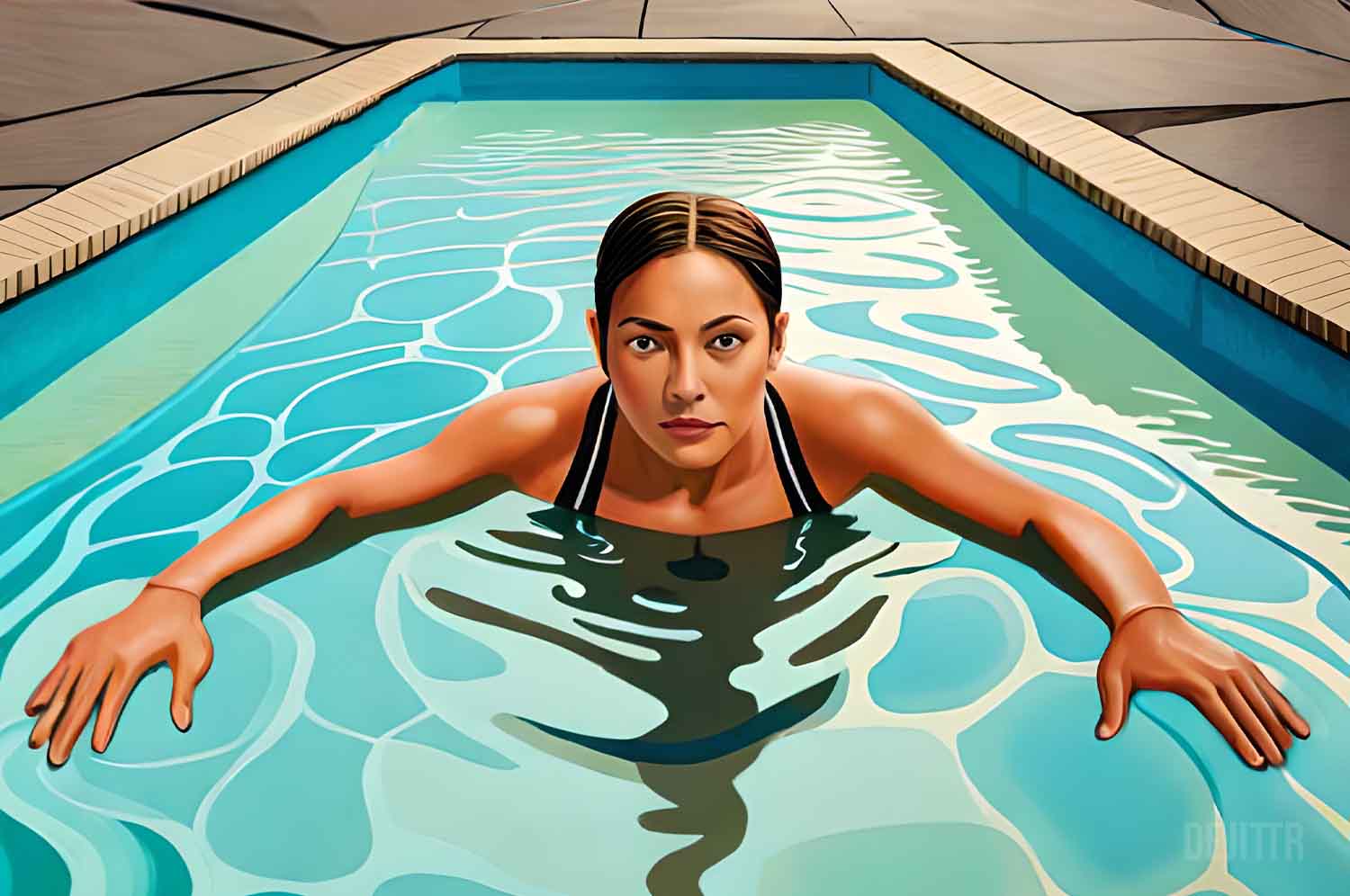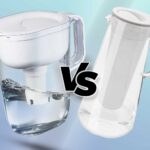Ever wondered why you still feel thirsty when in the pool? Why doesn’t your body just absorb water from the surrounding water and help you rehydrate?
Key Takeaways:
Technically, the body doesn’t absorb water because our skin is made up of impermeable epithelial cells, which don’t allow water to get absorbed inside the body. So, if you are swimming, like any other high-intensity workout, you must address your hydration needs, like when on dry land.
Read on, as I dive deeper into this topic and explore the ins and outs of how our bodies interact with water while swimming.
Interactions Of Water With The Body In The Pool
Even while you’re swimming your skin remains protected from water absorption. “Stratified squamous epithelium” cells in our skin block water from entering inside.
I know, you might be wondering – swimming typically makes you want to pee. But why?
Well, It’s due to “Immersion Diuresis.”
Let me explain:
Immersion diuresis occurs when you’re underwater. This is caused by water pressure and temperature.
Water pulls heat from your body, constricting blood vessels near your skin to retain warmth. Constriction raises blood pressure, which reduces vasopressin (antidiuretic hormone or ADH) synthesis. Thus, urine production increases.
Moreover, water’s hydrostatic pressure raises blood pressure. Swimming increases water pressure, especially when you dive deeper. External pressure compresses your body, forcing blood from your extremities to your torso. Your kidneys detect this as an increase in blood volume and work to clear excess fluids, causing more frequent urine.
Swimming requires sufficient fluid intake to stay healthy. Our skin prevents water absorption but not fluid loss. So to stay hydrated, we must drink enough water before, during, and after swimming.
Swallowing Pool Water: Is It Harmful To Your Body?
Swallowing pool water is a common occurrence, especially for those who are new to swimming. However, it’s essential to know the potential health risks associated with ingesting pool water and how to minimize water ingestion.
Common Contaminants Found in Pool Water:
Pool water typically contains various contaminants, including:
- Bacteria and parasites – Pools can harbor harmful microorganisms, such as E. coli, Giardia, and Cryptosporidium. These organisms can cause infections if ingested.
- Chemical byproducts – Chlorine is often used to disinfect pool water, but it can react with organic matter to form disinfection byproducts, like chloramines. These chemicals can be irritating if swallowed.
Potential Health Risks:
Ingesting pool water can lead to several health issues, such as:
- Gastrointestinal issues – Consuming water contaminated with bacteria or parasites can result in stomach cramps, diarrhea, and vomiting.
- Skin and eye irritation – Chemical byproducts like chloramines can cause skin rashes, redness, and itching. They can also irritate the eyes, leading to red, itchy, or watery eyes.
Tips to Minimize Water Ingestion:
To reduce the chances of swallowing pool water, consider the following tips:
- Proper breathing techniques – Learn and practice proper breathing techniques, such as exhaling through your nose when your face is submerged and inhaling when your face is out of the water.
- Using a nose clip or goggles with a nose cover – This can help prevent water from entering your nose and mouth while swimming.
Pool Chemicals And Water Absorption: What You Need To Know
Swimming is fun and refreshing, but you need to know how pool chemicals affect your skin. Water hygiene is maintained by disinfectants like chlorine. But these compounds may irritate sensitive skin or induce allergies.
Chlorine is the main pool disinfectant because it kills germs that cause infections and diseases. It kills germs by dissolving their cell membranes. However, chlorine’s ability to sanitize pool water can also dry and irritate your skin.
After swimming, sensitive skin or pool chemicals may cause itching, redness, or rashes. Before and after swimming, you can use skin protection methods to reduce these dangers and protect your skin.
For instance, pre-swim moisturizing works. Before diving in, apply a water-resistant, moisturizing moisturizer or cream to prevent excessive water absorption and chlorine contact. Eczema and dry skin sufferers must take this step.
After swimming, rinsing with fresh water is essential. This removes pool chemicals and chlorine from your skin, decreasing irritation. After showering, use a gentle soap and a nourishing moisturizer to restore your skin’s natural hydration.
Hydration Tips When Spending The Day At the Pool
Swimming is healthy and pleasant, but safety must be considered. In this section, we’ll talk about pool safety touching on topics such as hydration, supervision, pool rules, and swimming gear.
Stay Hydrated:
Swimming requires hydration to avoid dehydration, cramping, and tiredness. Dark urine, headaches, and dizziness are signs of dehydration. Consider these swimming hydration tips:
- Drink water before, during, and after swimming.
- Take water breaks often.
- Avoid sugary and caffeinated drinks.
Top Drinks For Swimming:
Before or after swimming, you can drink any of the following:
- Plain Water
- Coconut water
- Sports drinks (moderately)
Preventing Water From Entering Your Ears When Swimming
Swimming is fun and healthful, but you must protect your vital organs like the ears. Water in your ear canal can cause swimmer’s ear and other illnesses. Take these precautions to avoid these issues:
Use Swimming Ear Plugs:
Swimming earplugs block water from entering your ears. Silicone or wax seals your ear canal. Choose the suitable earplug type and dimension and follow the manufacturer’s instructions.
Drain Water After Swimming:
After leaving the water, tilt your head and gently pull on your earlobe to drain the trapped water. If both ears are wet, repeat the process. This easy method helps swimmer’s ear and other illnesses.
Gently Dry Your Ears After Swimming:
To eliminate extra water, gently stroke your ears. You can also dry your ears with a low-setting hair dryer at a safe distance. Avoid directing the dryer into your ear canal and using hot air.










